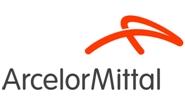Steel Mills

ArcelorMittal Warning of Low Hot Strip Mill Capacity Utilization Rates
Written by Sandy Williams
July 7, 2015
ArcelorMittal USA warns that low capacity utilization of hot strip mills cannot continue.
“It is not sustainable to operate multiple HSMs at low utilization rates when the same volume of steel could be produced by few HSMs at higher utilization rates,” writes CEO Andrew Harshaw, in the ArcelorMittal USA blog Raw.
Harshaw notes record levels of steel imports have taken market share from US steel producers. Imports of flat carbon products alone have risen 70 percent since 2013 and, as a result, mills are running at low utilization rates. Flat carbon products account for 93 percent of ArcelorMittal USA business.
ArcelorMittal’s hot strip mills have been averaging 70 percent utilization even though the costs for maintaining and operating them remain the same as 100 percent utilization. Each HSM averages $39 million in repair and maintenance each year, costing ArcelorMittal USA more than $1 billion annually, says Harshaw.
The answer is consolidation of HSMs and, subsequently, operations along the finishing line as well.
“To achieve higher utilization and lower our operating costs in a challenging market environment, we must: 1. invest in certain assets to ensure their capacity is better matched with downstream units and they can run at or close to full capacity; and 2. divest ourselves of certain assets, keeping the healthiest and most strategic running as close to full as possible. Clearly, we face formidable challenges with difficult choices ahead,” writes Harshaw.
ArcelorMittal has been in financial straits for several quarters with consolidated results showing a net loss of $1.1 billion in FY 2014. ArcelorMittal USA, which is included in the company’s NAFTA segment along with Mexico and Canada, has been negatively impacted by imports and lower steel prices as well as by fixed costs.
“It’s no secret that ArcelorMittal USA’s financial performance has been poor,” writes Harshaw. “Fixed costs – including wages, medical costs and post-retirement expenses – are significant and don’t fluctuate with the ebb and flow of steel consumption or market prices for the products we produce. These costs are increasing each year while our average steel selling prices have declined dramatically due to imports and capacity utilization rests at historically low levels.”
Harshaw writes that not only does the US need a fair market for the steel industry to compete in, it also needs to match assets to “the geographic reach of our customers, a skilled workforce that embraces the competitive forces at play in our industry while being cost conscious on all fronts.”
“Companies that adapt to changing conditions will survive; those who refuse to change will continue to fill the coffers of the bankruptcy lawyers.”
The text of Andrew Harshaw’s blog and other commentary in Raw may be accessed here.

Sandy Williams
Read more from Sandy WilliamsLatest in Steel Mills

Algoma fires up EAF steelmaking with first arc
Algoma Steel reached a milestone in its transformation from blast furnace to electric arc furnace (EAF) steelmaking, with its Unit One EAF achieving its first steel production this week.

Nucor holds HR list price at $910/ton
Nucor is keeping its list price for spot hot-rolled coil unchanged after last week’s shortened holiday week.

Cliffs unveils new hydrogen-powered stainless line in Ohio
CEO Lourenco Goncalves, flanked by state leaders and union reps, touted the project as proof that US manufacturing is not only alive, but also advancing.

Cliffs idles Steelton, Riverdale, and Conshohocken operations
Cliffs has idled facilities in Riverdale, Ill., and Conshohocken and Steelton, Pa.

Radius loss narrows, volumes climb in ‘healthy’ West Coast market
Stronger steel demand in the Western US, rising scrap flows, and improved rolling mill utilization drove sequential gains for Portland, Ore.-based Radius Recycling.
